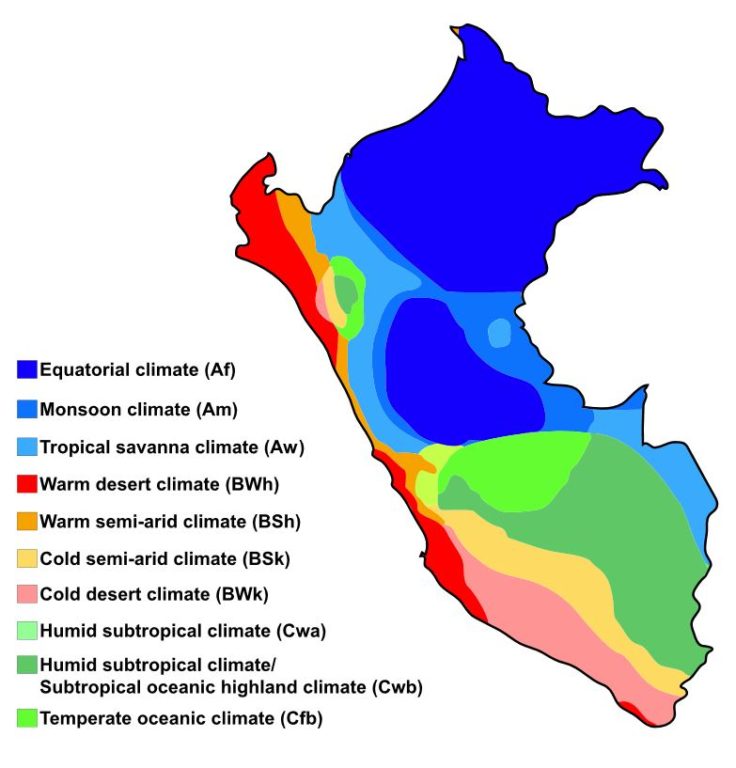Peru can be considered a diverse country in it’s landscape due to the Andean mountain range that runs from north to south. It is divided into three very broad climatic regions: the coast, the Andean highlands, the eastern lowlands, and the Amazon rainforest (McCray, 2020). The coast is characterized by a semiarid subtropical desert climate. The southern and central coasts experience temperatures between 13°C and 26°C, with May and October being the coolest months. As the climate varies with elevation in the Andean highlands, the north has a semi-tropical climate, while the south has a sub-tropical climate. The rainy season is traditionally between September and March in the north (Shutter, 2016).The Andean region is divided into three distinctive regions: The northern tropical belt (north of 8°S), the southern tropical belt (8°S-27°S) and the extratropical Andes belt (south of 27°S) (Poveda, 2020). Despite being entirely in the tropics where warm to hot and humid weather would be expected throughout the year, the unique combination of tropical latitude, the Pacific Ocean with the cold Humboldt Current (and in some years the El Niño phenomenon) (Richter, 2016), the range of the Andes mountains and the variations in topography provide the country with a great diversity of climates.
The capital of Peru, Lima is located directly on the Pacific Ocean, in an arid region of plains that rise to the east to the foothills of the Andes Mountains (Trex, 2022). The cold Humboldt Current that runs along most of the Peruvian and Chilean coast moderates the heat of the tropical sun, but produces high humidity with clouds and fog (Coral, 2022). To the east of the city, the Andes mountains block tropical weather, including storms and rains from the Amazon basin (Summer, 2021). In this way, Peru is a perfectly balanced climactic South American country for open textile manufacturing, because all aspects of textile production can thrive here.
Figure 8.
Peruvian Climate



